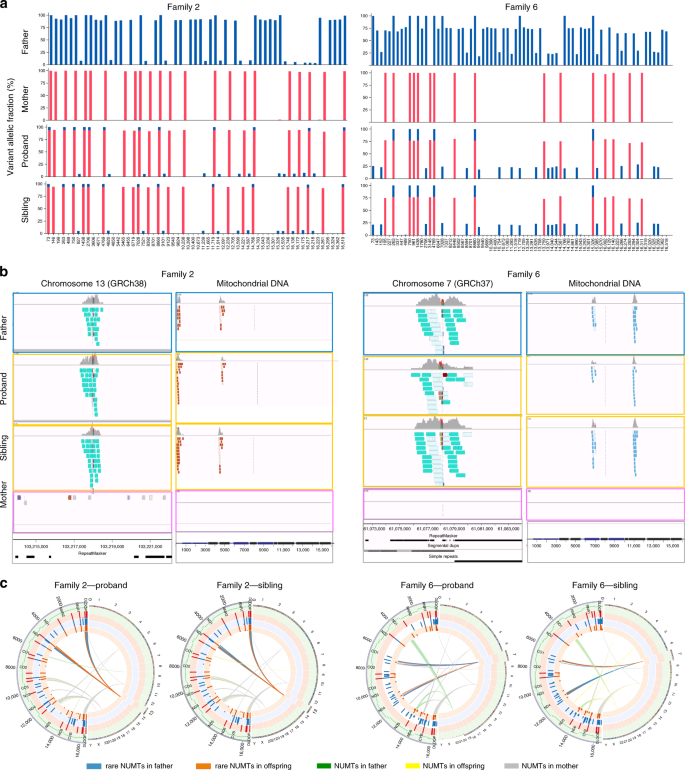Genetic signatures of 7 out of 11, 305 unrelated mother-father-trios showed allelic fractions of 5-25% of 0.06% offspring having a heteroplasmic haplotype consistent with bi-parental transmission of mtDNA.
This paper analyzes what is called nuclear-encoded mitochondrial segments (NUMTs). NUMTs vary in size and lengths but in general describe a transposition of any type of cytoplasmic mitochondrial DNA into the nuclear genome of a eukaryotic organism. What this paper reveals is that larger NUMTs can be transmitted from the paternal line and resemble mtDNA heteroplasmy. This is often confused to the claim of a paternal transmission of mtDNA. The authors make a very interesting claim that based upon their findings, rare mtDNA haplotypes could have arisen through inter-molecular recombination, thus making it possible for paternal mtDNA transmission in the past. There are some instances where there is paternal leakage of mtDNA but those are often rare and occur in interspecies breeding of mice, in vitromanipulation of cattle, or a once time rare human mitochondrial disease. Otherwise, the reason that mtDNA is inherited from the maternal lineage is due to the sheer 1000-fold more mtDNA that are present in oocytes compared to sperm. What this study also showed was that mtDNA molecules from sperm are not diluted out or destroyed after fertilization.

Figure 1: Bioinformatic pipeline to detect mixed haplotypes from trios.

Figure 2: Mixed haplotype patterns and NUMTs observed in two families.
Warrenkevin Henderson
Nature Journal 08APR20 update 4/5
https://www.nature.com/articles/s41467-020-15336-3

No comments:
Post a Comment